Managing Your Baby Feeding Tableware Supply Chain from China: How to Ensure Smooth Operations?
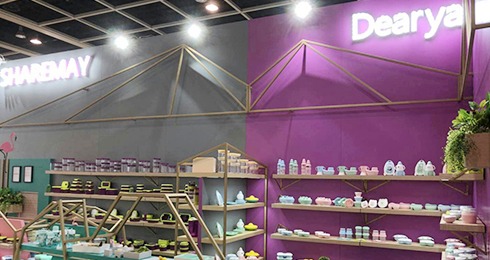
Worried about delays or quality issues with your baby tableware from China? I get it. Managing a supply chain feels complex, and any hiccup can impact your brand and customers. It's a constant focus for me at dearya.
To ensure smooth operations when managing your baby feeding tableware supply chain from China, implement rigorous pre-shipment quality control. Also, establish robust traceability for production batches. Partner with reliable logistics providers and actively minimize communication gaps with your suppliers.
A well-managed supply chain is the backbone of a successful import business, especially for sensitive products like baby feeding items. Let's explore how to tackle these key areas effectively.
What quality control steps should be included before shipment?
Are you anxious about receiving a shipment of baby tableware only to find defects? This fear is common, especially when manufacturing is miles away. It's a major concern for my clients, and for me too.
Before shipment, crucial quality control (QC) steps include a pre-production meeting, in-process checks, and a final random inspection (FRI). This FRI should cover visual defects, measurements, functionality tests, and packaging integrity to catch issues before goods leave the factory.
Quality control isn't just a final check; it's a process that should be integrated throughout manufacturing. For baby feeding tableware, where safety and functionality are paramount, a robust QC plan is essential. This is a core part of the full supply chain services we offer at dearya, ensuring our B2B clients receive products that meet their specifications and quality expectations. Our factory's compliance with ISO, FDA, and BSCI audits underpins our commitment to quality. Addressing the pain points of customers like Jeff Weaver, who has experienced issues with products not meeting design requirements, starts with meticulous QC.
Pre-Production Meeting (PPM) and Sample Approval
Before mass production begins, a clear understanding of requirements is vital.
- Golden Sample: Approve a "golden sample" that represents the exact quality, material, color, and packaging you expect. This sample becomes the benchmark for mass production.
- Specification Sheet: Provide a detailed specification sheet covering all aspects: dimensions, materials (e.g., specific grade of PP, Tritan, or stainless steel), color Pantone codes, printing details, packaging requirements, and any specific safety standards to meet (e.g., FDA, LFGB).
- PPM with Supplier: Hold a meeting (can be virtual) with the supplier's production and QC team to review all specifications and the golden sample. Clarify any potential ambiguities. This ensures everyone is on the same page before a single unit is made.
In-Process Quality Control (IPQC)
Waiting until the end to check quality is risky. IPQC involves checks at various stages of production.
- Raw Material Inspection (Incoming Quality Control - IQC): Verify that the materials received by the factory (e.g., plastic resins, stainless steel sheets) match the specifications and have the necessary certifications.
- First Article Inspection (FAI): Inspect the first few units off the production line against the golden sample and specifications. This helps catch any setup errors early.
- Ongoing Production Checks: Implement regular checks during the manufacturing process. For example, for injection-molded cups, this could include checking for consistent color, absence of flow marks, or correct wall thickness at set intervals. For stainless steel cutlery, it might involve checking polishing quality or stamping accuracy.
Final Random Inspection (FRI) / Pre-Shipment Inspection (PSI)
This is the most common and critical QC step performed before the goods leave the factory, usually when 100% of the goods are produced and at least 80% are packed.
- Sampling Plan: Use a recognized statistical sampling plan, like AQL (Acceptable Quality Limit) based on ISO 2859-1. This determines how many units to inspect from the batch.
- Inspection Checklist: Your inspector (your own staff, a third-party agency, or the factory's QC if trusted and verified) should use a detailed checklist covering:
- Quantity Verification: Ensure the number of units matches the order.
- Visual Inspection: Check for cosmetic defects like scratches, dents, dirt, incorrect colors, poor printing, or surface imperfections.
- Dimensional Checks: Measure key dimensions against the specifications.
- Functional Tests: For baby tableware, this could include:
- Lid fit and leakage tests for cups.
- Stability tests for bowls.
- Strength tests for cutlery handles.
- Suction base effectiveness for bowls/plates.
- Material Checks (if possible on-site): Basic checks, though lab tests are more definitive.
- Packaging and Labeling: Verify correct barcodes, shipping marks, instruction manuals, and packaging integrity.
- Safety Checks: Ensure no sharp edges or small parts that could detach (especially for items with 3D character elements).
Third-Party Inspection Services
For many importers, using a reputable third-party inspection company is a wise investment. They provide an unbiased assessment of the product quality before you make the final payment and the goods are shipped. This is particularly important if you cannot visit the factory yourself.
Here’s a summary of QC checkpoints:
| QC Stage | Purpose | Key Activities |
| Pre-Production | Ensure clear understanding of requirements before mass production. | Golden sample approval, detailed spec sheet, PPM with supplier. |
| In-Process (IPQC) | Catch issues early during manufacturing, prevent large-scale defects. | Raw material checks (IQC), first article inspection (FAI), regular line checks. |
| Final Random Inspection (FRI) | Verify overall quality of the finished batch before shipment. | AQL sampling, visual checks, dimensional checks, functional tests, packaging verification, safety checks. |
Implementing these QC steps helps prevent costly mistakes, reduces the risk of receiving substandard products, and ensures the baby feeding tableware you import is safe and meets your customers' expectations.
How do you ensure traceability across multiple production batches?
Imagine a safety issue arises with a batch of baby cups. How would you quickly identify and recall only the affected products? Without traceability, this becomes a nightmare. I always stress this to my team.
To ensure traceability across production batches, implement unique batch or lot numbers for each production run. These numbers should be marked on the product (if feasible), its packaging, and linked to production records, raw material inputs, and QC reports.
Traceability is the ability to track a product or its components back through the supply chain, from the finished item to its raw materials and production history. For baby feeding tableware, where safety is paramount, robust traceability is not just good practice; it's often a regulatory expectation and a crucial part of risk management. It allows for targeted recalls if necessary and helps identify the root cause of any quality issues. At dearya, our order management system is designed to support this, ensuring our B2B clients have this assurance.
Key Elements of a Traceability System:
1. Batch/Lot Numbering System
This is the cornerstone of traceability.
- Unique Identification: Assign a unique batch number (also called a lot number or production code) to each distinct production run. A production run could be defined by a specific period (e.g., a day's production), a specific machine, or a specific batch of raw materials.
- Information Encoded (Optional but useful): The batch number can be structured to include information like the production date, factory code (if using multiple factories), production line, or material batch. For example,
YYYYMMDD-FAC01-L02-RM123.
- Consistency: Use a consistent numbering system across all products and batches.
2. Marking Products and Packaging
The batch number needs to be physically present.
- On the Product: If feasible and safe, the batch number can be discretely molded, engraved, or printed onto the baby plate, cup, or cutlery itself. This must be done with food-safe, durable methods.
- On Retail Packaging: The batch number must be clearly printed on the individual retail packaging of each item.
- On Shipping Cartons: The batch number should also be on the outer shipping cartons for easy identification in the warehouse.
3. Detailed Record Keeping
Comprehensive records link the batch number to all relevant production information.
- Raw Material Records: Link each product batch to the specific batches of raw materials used (e.g., lot numbers of PP resin, Tritan pellets, stainless steel coils, colorants). This should include supplier certificates of analysis for those raw materials.
- Production Records: Document key production parameters for each batch, such as machine settings, production dates and times, operators involved, and any deviations or issues noted during production.
- Quality Control Records: Link each product batch to its corresponding QC reports (IQC for materials, IPQC during production, and FRI reports for the finished goods). This includes details of any defects found and corrective actions taken.
- Shipping Records: Record which batch numbers are included in which shipments to specific customers.
4. Supplier Collaboration
Effective traceability requires close collaboration with your Chinese supplier.
- Clear Requirements: Clearly communicate your traceability requirements to the supplier and include them in your manufacturing agreement.
- System Audits: Periodically audit your supplier's traceability system to ensure they are correctly implementing procedures and maintaining accurate records. Our BSCI and ISO audits at dearya cover aspects of process control which contribute to traceability.
- Training: Ensure the supplier's staff are trained on the importance of traceability and how to follow the procedures.
Benefits of Strong Traceability:
- Targeted Recalls: If a defect or safety issue is discovered, you can quickly identify and recall only the affected batch(es), minimizing cost and brand damage.
- Root Cause Analysis: If quality problems occur, traceability helps pinpoint the source – whether it's a specific batch of raw material, a particular machine, or a certain production period. This allows for effective corrective actions.
- Compliance: Many regulations for children's products require or strongly imply the need for traceability (e.g., Consumer Product Safety Improvement Act - CPSIA in the US).
- Consumer Confidence: While not always visible to the end consumer, robust traceability builds trust with your B2B customers and regulatory bodies. It demonstrates a commitment to safety and quality.
Example Traceability Flow:
| Information Point | Data Recorded | Linked To |
| Raw Material Receipt | Material type, supplier, supplier lot #, date, quantity, CoA, IQC report. | Supplier, Internal Raw Material Lot # |
| Production Start | Product ID, Assigned Product Batch #, date, line, operator, machine settings. | Internal Raw Material Lot #(s) Used |
| In-Process QC | Product Batch #, QC check type, results, date/time, inspector. | Production Records |
| Finished Goods | Product Batch #, quantity produced, FRI report, packaging details. | Production Records, QC Records |
| Shipment to Customer | Customer PO, Product Batch #(s) Shipped, quantity, shipping date, invoice #. | Finished Goods Records, Customer Order |
Implementing a thorough traceability system requires effort and discipline but is an indispensable part of managing a safe and reliable supply chain for baby feeding tableware.
What logistics partners offer reliable baby product export services?
Your baby tableware is finally ready in China! Now, how do you get it safely and efficiently to your country without issues? Choosing the right logistics partner is more than just finding a shipper.
Reliable logistics partners for exporting baby products from China include major international couriers (DHL, FedEx, UPS) for smaller/urgent shipments, and experienced freight forwarders specializing in your trade lane and product type for larger FCL/LCL sea or air freight.
Selecting the right logistics partner is crucial for a smooth supply chain, especially when importing baby products that may require careful handling and adherence to specific import regulations. The ideal partner depends on your shipment volume, urgency, budget, and the level of service you require. As part of our comprehensive supply chain services at dearya, we often manage logistics for our B2B clients, working with trusted forwarders to ensure timely and safe delivery.
Types of Logistics Partners:
1. International Couriers (Integrators)
- Examples: DHL, FedEx, UPS.
- Best For: Smaller shipments, samples, urgent deliveries, or when door-to-door service with full tracking is a priority.
- Pros: Fast transit times, extensive global networks, user-friendly tracking, handle customs clearance (often for a fee).
- Cons: Can be significantly more expensive for larger shipments compared to freight forwarders. Less flexibility for specialized handling requirements.
2. Freight Forwarders
- Role: Freight forwarders are logistics experts who arrange and manage the transportation of goods on your behalf. They don't typically own the ships or planes but contract with carriers. They can handle sea freight (Full Container Load - FCL, or Less than Container Load - LCL) and air freight.
- Best For: Most commercial shipments, especially larger volumes (LCL or FCL).
- Pros:
- Cost-Effective for Volume: More economical for larger shipments.
- Flexibility: Can tailor services to your needs, including consolidation, warehousing, customs brokerage, and cargo insurance.
- Expertise: Good forwarders have deep knowledge of shipping routes, carriers, port operations, and customs procedures for specific countries and product types (like baby products). They can advise on documentation and compliance.
- Negotiating Power: They often have better negotiating power with carriers due to the volume of freight they handle.
- Cons: Transit times for sea freight are longer. Quality of service can vary greatly between forwarders.
3. Third-Party Logistics Providers (3PLs)
- Role: 3PLs can offer a broader range of outsourced logistics services, which might include transportation, warehousing, inventory management, order fulfillment, and more. Some freight forwarders also act as 3PLs.
- Best For: Businesses looking to outsource a significant portion of their logistics operations.
- Pros: Can offer integrated solutions, potentially leading to greater efficiency and cost savings if you need comprehensive services.
- Cons: Might be more than needed if you only require basic shipping.
Key Considerations When Choosing a Partner for Baby Products:
- Experience with Baby Products/Children's Goods: Do they understand the specific import requirements, potential inspections, or documentation needs for baby feeding items in your country (e.g., FDA, CPSC in the US; EU regulations)?
- Knowledge of Your Trade Lane (China to Your Country): Experience with specific ports, customs brokers, and typical transit challenges on your route is invaluable. This helps avoid delays, a pain point for importers like Jeff Weaver.
- Network in China: A good forwarder will have strong representation or their own offices in major Chinese export hubs (like Guangdong and Zhejiang provinces, where we and many other plastic/tableware factories are located).
- Customs Brokerage Capabilities: Ensure they (or their trusted partners) are proficient in customs clearance for your country. Incorrectly handled customs can lead to significant delays and costs.
- Cargo Insurance: Always insure your shipments. Your logistics partner should be able to arrange comprehensive cargo insurance.
- Tracking and Communication: Look for partners who offer good shipment visibility and proactive communication if issues arise.
- References and Reputation: Check reviews, ask for references from other importers in your industry.
- Cost vs. Service: Don't choose solely on the lowest price. Reliability, communication, and expertise are critical, especially for baby products. A cheap forwarder who causes delays or damages can cost you much more in the long run.
Finding Potential Partners:
- Industry Associations: Freight forwarding associations often have member directories.
- Online Search & Platforms: Many forwarders have a strong online presence. Some freight marketplaces allow you to compare quotes.
- Referrals: Ask other importers or your supplier if they can recommend reliable forwarders. (Though always do your own due diligence even with supplier recommendations).
Here's a quick comparison for typical use cases:
| Feature | International Couriers (DHL, FedEx, UPS) | Freight Forwarders |
| Ideal Shipment Size | Small parcels, documents, samples | LCL (pallets), FCL (containers), significant air cargo |
| Cost (per kg) | Higher | Lower for volume shipments |
| Transit Time | Faster (especially air) | Slower for sea freight; air freight comparable to couriers |
| Service Scope | Primarily door-to-door transport | Broader: transport, customs, warehousing, consolidation |
| Customs Handling | Usually integrated | Often a distinct service (in-house or partnered) |
| Complexity Mgmt. | Simpler for user | Can handle more complex logistics scenarios |
Choosing the right logistics partner is an investment in your supply chain's reliability. For baby feeding tableware, prioritize partners who demonstrate expertise in handling such goods and navigating the regulatory landscape.
How can communication gaps with Chinese suppliers be minimized?
Frustrated by misunderstandings or slow responses from your Chinese supplier? These communication gaps can derail your baby tableware orders. I've learned that proactive, clear communication is absolutely essential.
Minimize communication gaps by using clear, simple language. Confirm understanding frequently. Utilize multiple communication channels effectively. Also, build strong personal relationships and be mindful of cultural differences and time zones. Detailed documentation is also key.
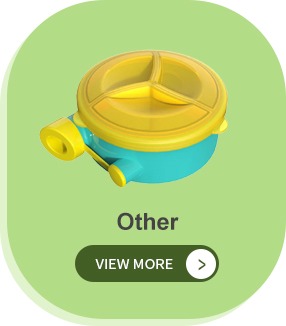
Effective communication is the lifeblood of any successful international business relationship, especially when dealing with custom-manufactured products like baby feeding tableware where precise details matter. Misunderstandings can lead to incorrect products, missed deadlines, and strained partnerships – all significant pain points for importers like Jeff Weaver, who expect professional and concise responses. As a Chinese manufacturer (dearya) serving global B2B clients, we prioritize clear communication.
Strategies for Clearer Communication:
1. Use Clear, Simple, and Precise Language
- Avoid Slang, Idioms, and Jargon: These may not translate well. Use standard business English.
- Short Sentences and Paragraphs: Make your emails and messages easy to read and digest.
- Be Specific and Unambiguous: Clearly define quantities, specifications (dimensions, materials, Pantone colors), timelines, and expectations. Don't assume anything is "understood."
- Use Visuals: Pictures, drawings, and diagrams can often convey information more effectively than words alone, especially for product specifications or identifying defects. We often use detailed drawings for our custom design projects.
2. Confirm Understanding (Both Ways)
- Request Confirmation: Ask your supplier to confirm they have understood key points, especially critical specifications or changes. "Please confirm you understand that the cup must be made from Tritan TX1001 and the logo should be Pantone 285C."
- Summarize Discussions: After a call or meeting, send a follow-up email summarizing the key decisions, action items, and responsibilities.
- Ask Clarifying Questions: If you don't understand something the supplier says, ask for clarification immediately.
3. Utilize Multiple Communication Channels Effectively
- Email: Best for formal communication, detailed specifications, sending documents, and creating a record.
- Instant Messaging (e.g., WeChat, WhatsApp): Good for quick questions, informal updates, and building rapport. WeChat is widely used in China for business.
- Video Calls (e.g., Zoom, Skype, WeChat Video): Excellent for more complex discussions, pre-production meetings, virtual factory tours, or resolving urgent issues where face-to-face interaction (even virtual) is beneficial.
- Phone Calls: Can be useful for urgent matters, but always follow up with an email summary.
4. Build Strong Personal Relationships (Guanxi)
- Invest Time: Building "guanxi" (relationships/connections) is important in Chinese business culture. Try to build a friendly, professional rapport with your key contacts at the supplier.
- Show Respect and Patience: Understand that cultural norms may differ.
- Factory Visits (if possible): Meeting in person can significantly strengthen relationships and improve understanding.
5. Be Mindful of Cultural Differences and Time Zones
- Time Zones: Be aware of the time difference and try to schedule calls at mutually convenient times. Acknowledge if you're sending a message outside their working hours.
- Directness: Communication styles can vary. Sometimes, a "yes" might mean "yes, I understand," rather than "yes, I agree and can do that." This is where confirming understanding becomes crucial.
- Holidays: Be aware of major Chinese holidays (like Chinese New Year, Golden Week) when factories and offices will be closed. Plan communication and orders around these.
6. Detailed Documentation is Your Friend
- Purchase Orders (POs): Your PO should be extremely detailed, listing all product specifications, quantities, prices, payment terms, shipping terms (Incoterms), and QC requirements.
- Specification Sheets: Provide comprehensive spec sheets for each product.
- Approval Records: Keep records of all sample approvals, artwork approvals, and inspection reports.
7. Appoint a Clear Point of Contact
- Internally: Have one primary person on your team responsible for communicating with the supplier to avoid sending mixed messages.
- With the Supplier: Identify your main point of contact at the supplier company who is responsive and has good English skills (if you don't speak Mandarin). Our service team at dearya provides dedicated contacts for our clients.
Overcoming Language Barriers:
| Strategy | Action | Benefit |
| Use Simple English | Avoid complex sentence structures, idioms, and slang. | Easier for non-native speakers to understand accurately. |
| Visual Aids | Supplement text with drawings, photos, and videos. | Clarifies technical details and reduces reliance on language alone. |
| Translation Tools (Carefully) | Use tools like Google Translate for understanding, but be cautious with critical communications. | Can help bridge gaps, but always verify understanding of translated output. |
| Bilingual Staff/Agent | If feasible, having someone on your team or a trusted agent who speaks Mandarin can be invaluable. | Facilitates nuanced discussions and deeper understanding. |
| Written Confirmation | Always get key agreements and understandings in writing, even after verbal discussions. | Creates a clear record and avoids "he said, she said" situations. |
Minimizing communication gaps requires consistent effort, empathy, and a commitment to clarity from both sides. It's an investment that pays off in smoother projects and stronger partnerships.
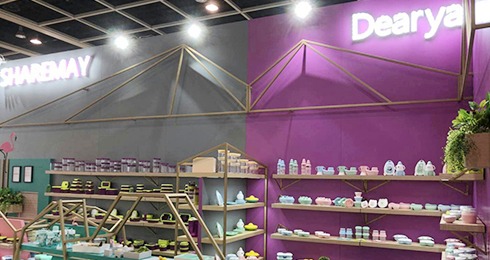 Managing Your Baby Feeding Tableware Supply Chain from China: How to Ensure Smooth Operations?
Managing Your Baby Feeding Tableware Supply Chain from China: How to Ensure Smooth Operations?
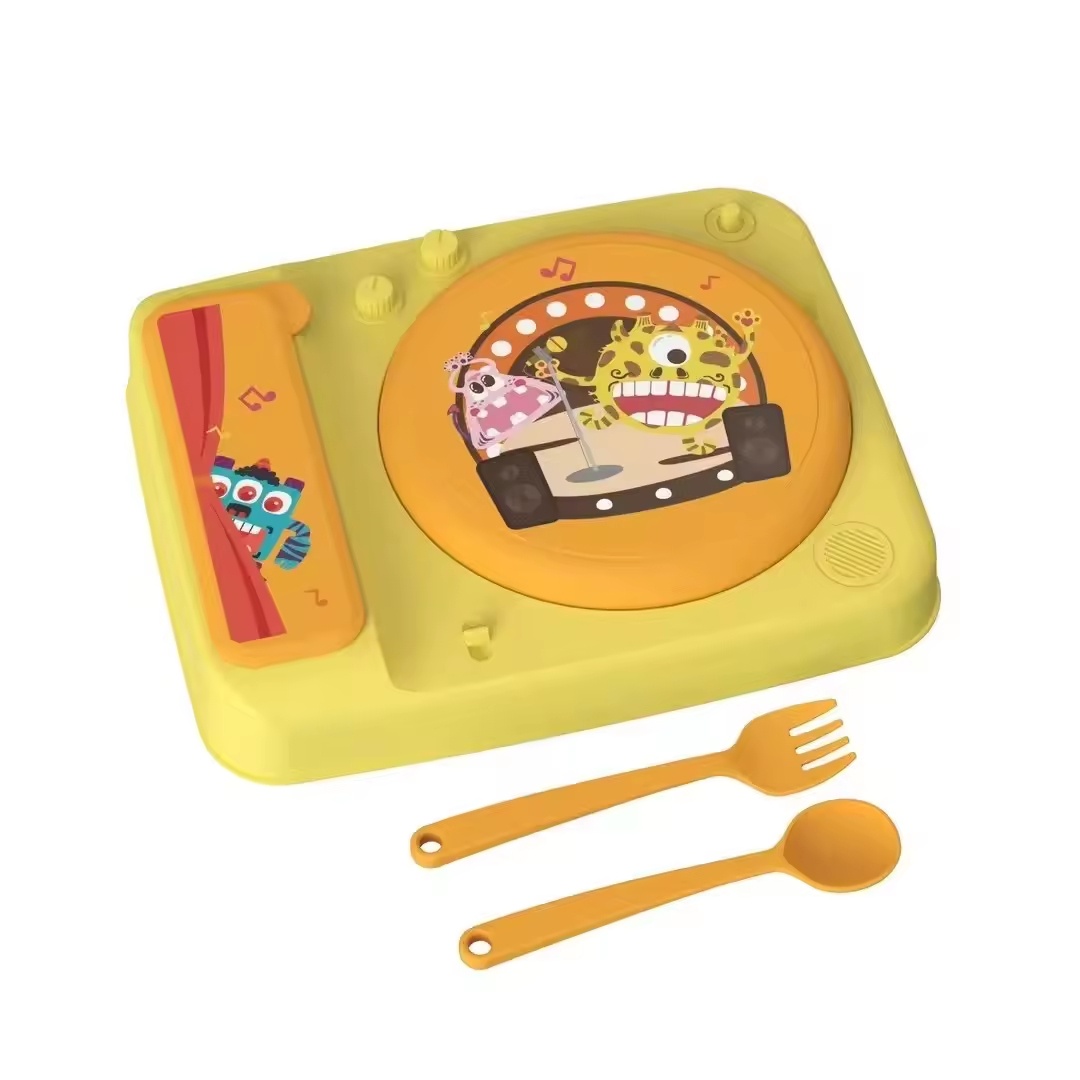 Negotiating Costs for Baby Plates & Cutlery with Chinese Suppliers: How Can You Get the Best Deal?
Negotiating Costs for Baby Plates & Cutlery with Chinese Suppliers: How Can You Get the Best Deal?
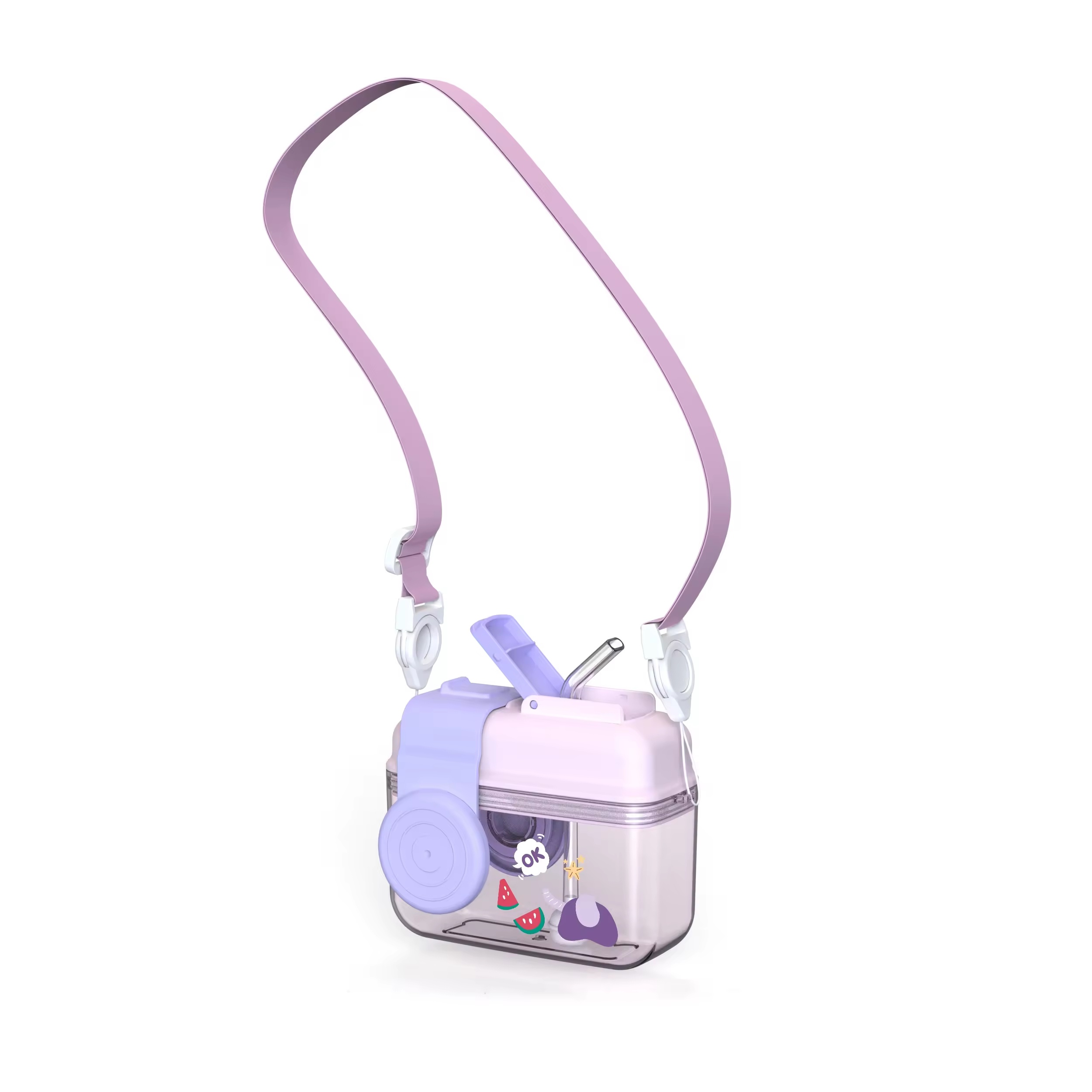 Importing FDA-Grade PP & Tritan Kids Cups from China?
Importing FDA-Grade PP & Tritan Kids Cups from China?
 What Design Features Make an IP-Themed Bowl Safe for Infants?
What Design Features Make an IP-Themed Bowl Safe for Infants?
